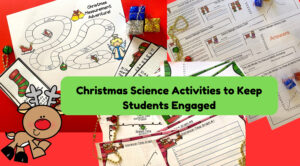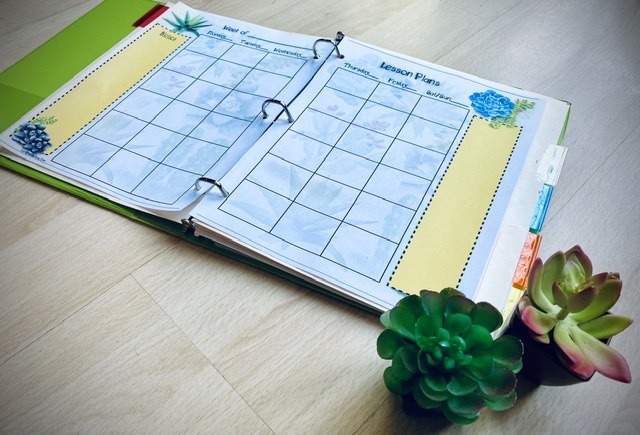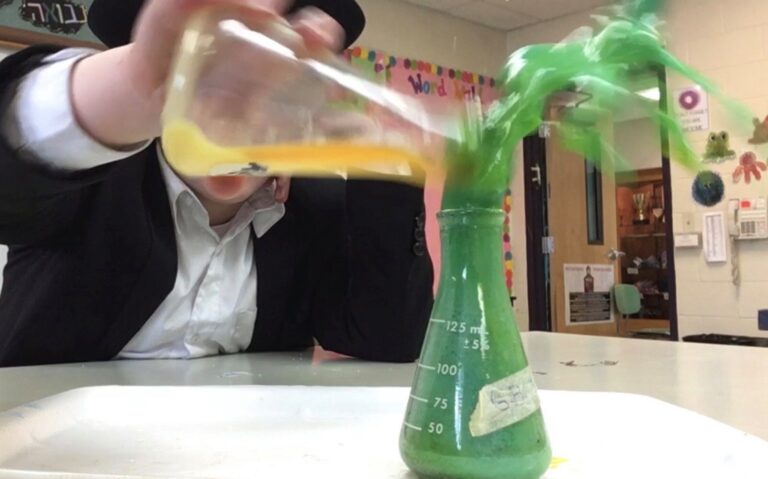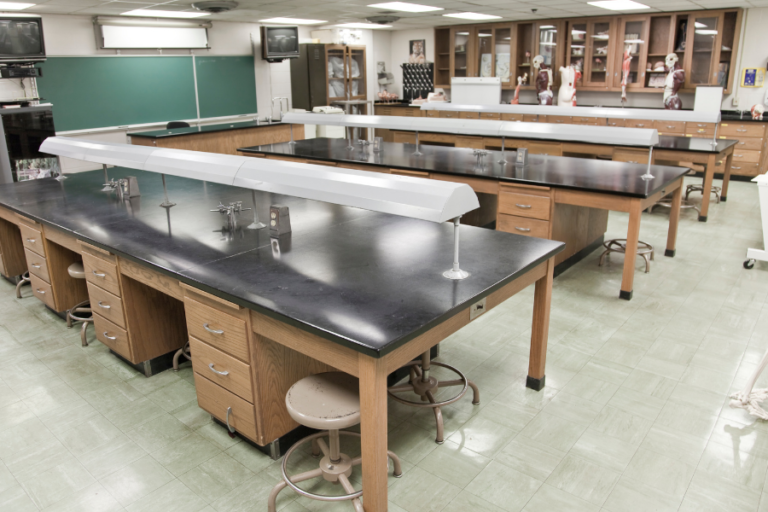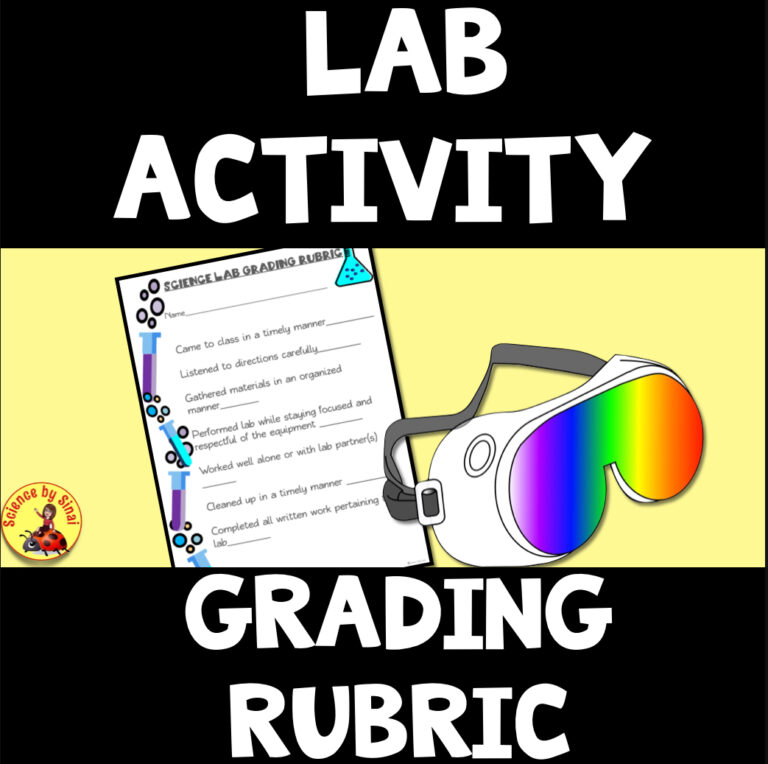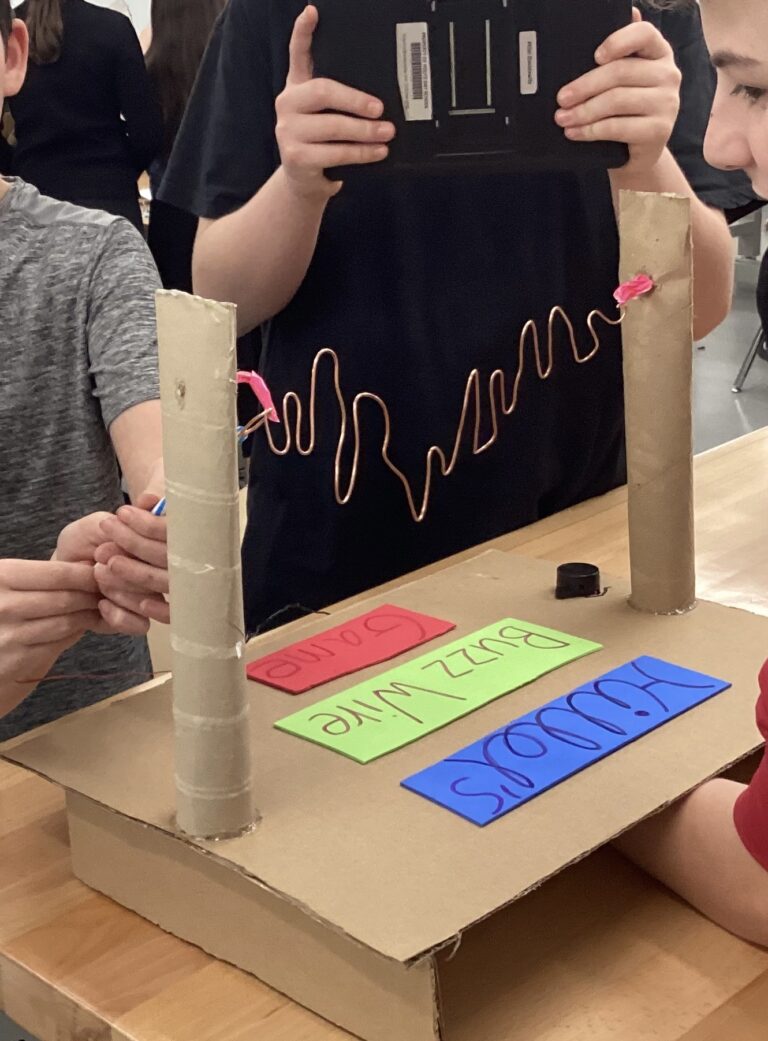Basic Supplies You Need in Your Science Classroom
Are you just starting out as a middle school science teacher and not sure what classroom supplies you should have on hand? Did you inherit a classroom from another teacher and you need to start from scratch?
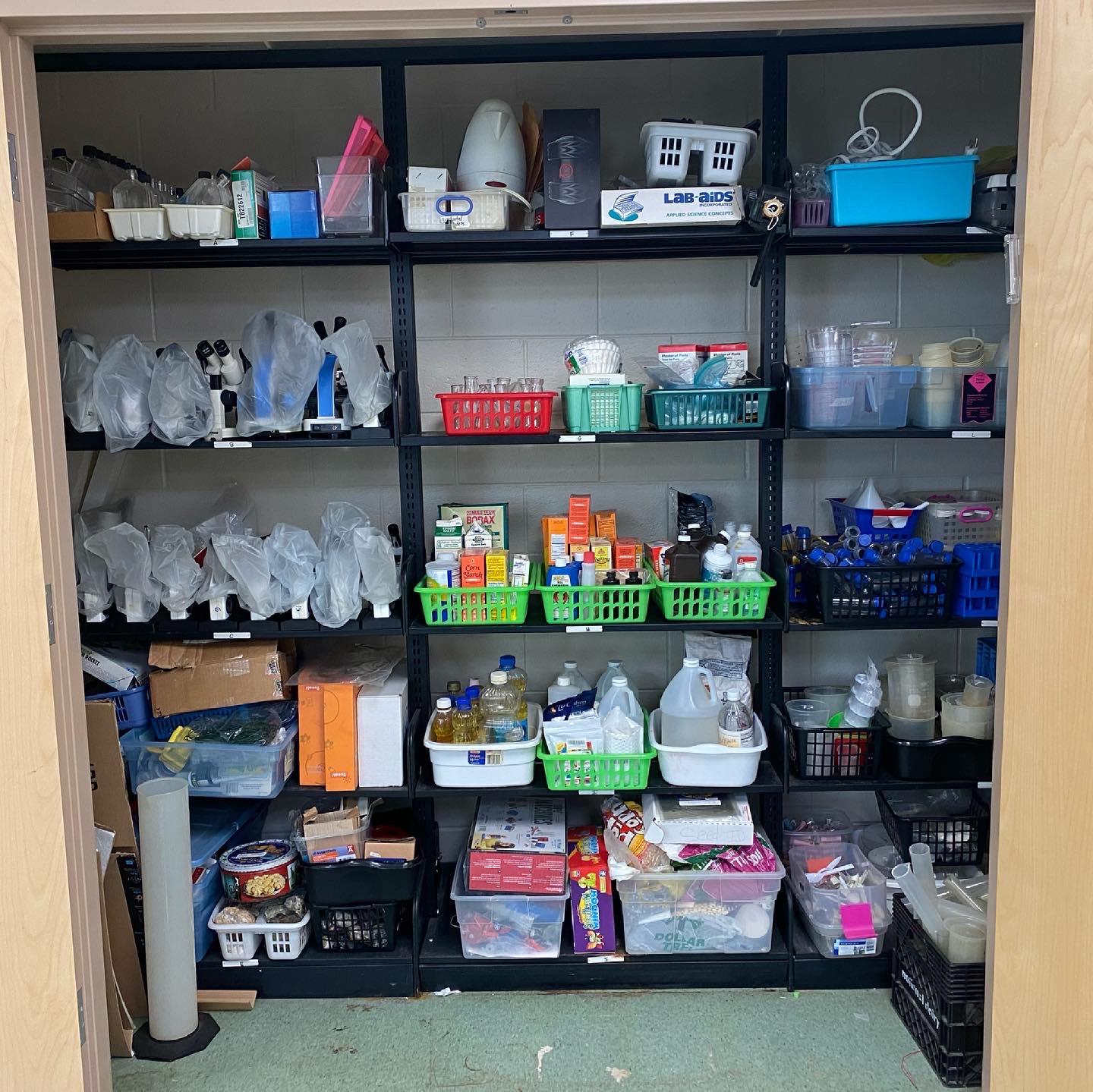
Basic Supplies You Need in Your Science Classroom
Updated Jan 21, 2021
Here are what I would consider the basics that every science teacher should have to start out. I have not included technology/robotics or the various supplies you need to do specific STEM Projects.
Most of the materials that I am including are easily accessible at a supermarket, Dollar store or a basic scientific company.
The supplies would be typical for teaching between 6th to 8th grade science. I am in a situation where I teach all three grades, as are others who teach in smaller schools.
For years, I struggled with how to remember what I had in each cabinet and closet. I finally put together my own science teacher planner that has inventory built into it. This has saved me hours of time! I can do my lesson plans from home without digging through my cabinets to make sure I have enough equipment or supplies. See my blog post called ARE YOU LOOKING FOR A SUPER ORGANIZED LESSON PLANNER JUST FOR SCIENCE TEACHERS?
Basic Chemicals
As you will see from the list, most of these classroom supplies can be purchased at the supermarket. I’ve also had success purchasing beakers, graduated cylinders and test tubes on either eBay or Facebook Marketplace for a fraction of what they cost from the science companies. I am also not afraid to trash pick!
- Glass Beakers of many sizes (Pyrex so they can be heated)
- Plastic Beakers
- Measuring Cups (Dollar Store)
- Glass flasks of different sizes
- Petri dishes
- Graduated Cyclinders(preferably plastic for less breakage)
- Pipettes/eye droppers
- Plastic Test Tubes (Steven Splanger has great hard plastic ones but they can’t be heated)
- Glass test tubes
- Test tube racks
- Test tube tongs
- Ring stands
- Goggles
- Gloves
- Thermometers
- Small bottles with lids (Good for distributing materials to individual tables without risking spills)
- Plastic and metal spoons
- Vinegar
- Baking Soda
- Ammonia
- Rubbing Alcohol
- Vegetable Oil
- Corn Syrup
- Borax(great for crystals and making Gak)
- Food coloring
- Steel wool(no soap)
- Iodine(for testing for the presence of starch)
- Coffee filters
- Hot plate
- Pot holders
- Bromothymol Blue(for detecting the presence of carbon dioxide)
- Benedict’s Solution(for detecting the presence of sugars)
- Sugar
- Salt
- Yeast
- Cornstarch
- Litmus Paper(ph indicator paper)
- Hydrogen Peroxide 3%( for making Elephant’s Toothpaste!)
- Epsom Salts
Copper Sulfate(for Types of Chemical Equations) - Calcium Chloride
Classroom Supplies for Teaching Biology
There are a wide range of concepts when teaching biology. These range from environmental science, plant and animal science to human body systems.
- Seeds for planting(popcorn, radishes, grass, dried pinto beans, dried Lima beans, sunflower seeds)
- Potting soil
- Grow light
- Sand
- Good posters of body systems
- Dollar store plastic flowers with good details for pollination studies
- Seashells
- Feathers
- Examples of local seeds
- As many natural samples that you and your students can find(bones, dead insects in jars, decaying wood,etc.)
- Stethoscopes
- Microscopes
- Prepared microscope slides
- Glass microscope slides
- Small animal tanks
- Plastic animals of all sizes(great for adaptation studies)
- Dissection trays
- Scalpels
- Magnifying glasses
Weather Equipment
It’s great to take the kids outside and have them actually measure the weather. Keep basic, inexpensive equipment on hand so they can keep a weather journal.
- Outdoor thermometers
- Ground thermometer
- Compasses(for finding wind direction)
- Bubbles (for finding wind direction)
- Psychrometer(relative humidity)
- Cloud charts
- Lava lamp for fun and to show convection
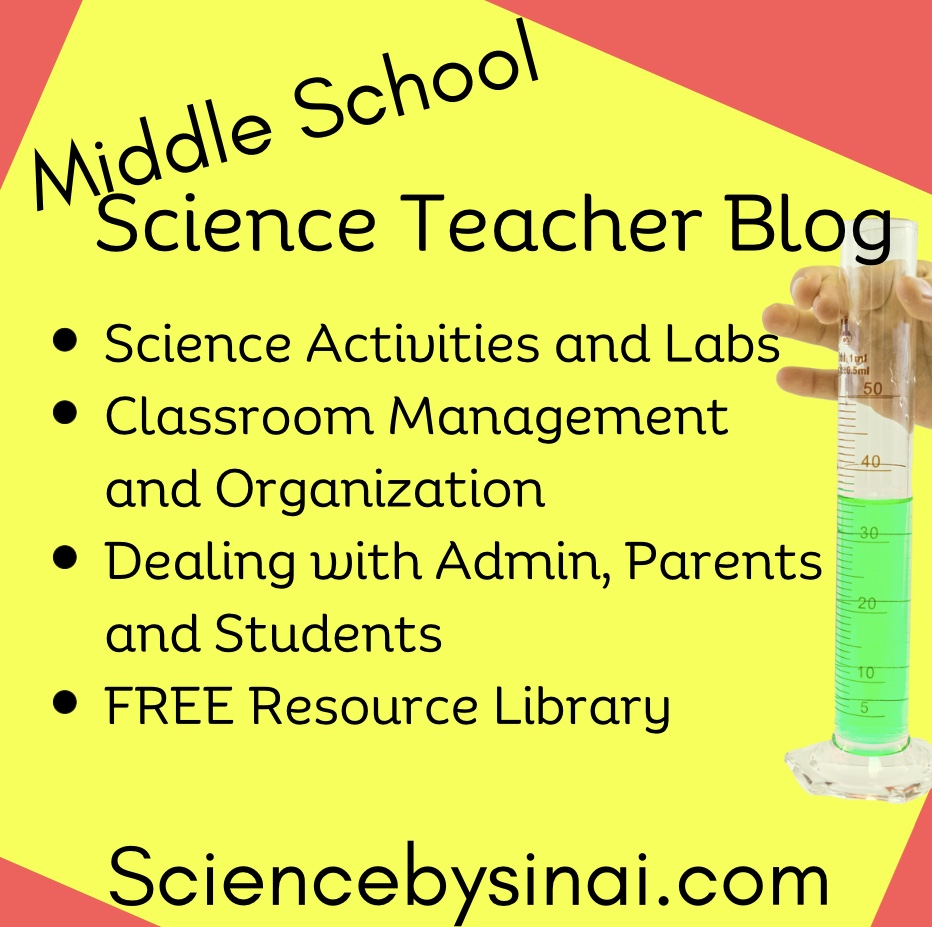
Forces and Motion Materials
There are so many labs that you can do with balanced and unbalanced forces(see my post LABS WITH IPADS TO TEACH BALANCED AND UNBALANCED FORCES), speed, acceleration and types of energy. Gather simple materials that can be used in many ways.
- Pulleys
- Thin rope
- Spring Scales
- Friction boards
- Blocks of wood
- Sandpaper
- Pullback cars(great for potential energy, kinetic energy, speed and acceleration labs)See my post MAKE SPEED AND ACCELERATION LABS FUN WITH PULLBACK CARS
- Toy cars (Dollar store)
- Ramps(pieces of old wood or cardboard)
- Stopwatches
- Metersticks
- Tape measures
- Trundle Wheel(clicks off meters over a bigger distance for outdoor speed labs such as my ZOMBIE CALCULATING SPEED LAB)
- Balls of all sizes(collision labs, gravity drop)
Magnet and Electricity Supplies
Students love playing with the properties of magnets and learning about the different types of circuits of electricity. If you go to Home Depot, or even Walmart, you can find these materials rather inexpensively. Once students initially learn about magnets, they can move on to creating magnet mazes. I also had them use their knowledge about circuits to create electricity games.
- Batteries(size C and 9 volts)
- Flashlight Bulbs or a cut up string of Christmas lights
- Insulated wire
- Wire cutters
- Battery holders
- Alligator clips
- Small motors
- Magnets of all sizes and strengths
- Static creating materials like fur, cotton, wool, fabric,etc
- Iron nails
- Piece of Copper
- Balloons
- Aluminum Foil
Supplies for Studying Light
Teaching about the electromagnetic spectrum and visible light is so much fun. You can do lots of projects with flashlights, lenses and mirrors. I like to have the students search throughout their houses for objects that are transparent, translucent and opaque and photograph them. These materials can be supplemented with digital resources as well such as INTERACTIVE LIGHT RAYS.
- Prisms
- Flashlights
- Colored Cellophane(to put on flashlights to mix colors of light)
- Mirrors
- Light Bulb holders and Bulbs(60 watt)
- Metal spoons(show concave and convex )
- Convex and concave lens if you desire
Supplies for Studying Sound
Keep your eye on Facebook Marketplace and eBay to find sets of tuning forks.
- Tuning forks
- Water basins(for showing waves from tuning forks)
- String
- Metal Spoons(hang from string and hit different surfaces)
- Plastic cups to make “telephones”
- Rubber bands
Materials for Teaching Astronomy
- Star charts
- Dollar store globe balls or get white ones and paint them
- 60 watt light bulb holder(listed in light supplies)
- Styrofoam 2” balls on dowels (for moon phases studies)
- Images printed out from NASA
A lot of the activities that you will do with astronomy have to do with using globe balls and the 60W light to discuss the position of the bodies in the sky. The globe balls can be used for representing seasons and the styrofoam balls on the sticks can be used for moon phase studies.
Earth Science Materials
Students love to collect their own rocks and look at any rock collections that you have. They can use the rubber mallet and a heavy towel to break the rocks to see the minerals inside. Once again, utilize eBay or Facebook marketplace to find rock collections for sale rather than spending money at a science company.
- Plaster of Paris(for making fossils)
- Rock and mineral sets
- Mineral testing kits
- Rubber Mallet and Heavy towel(for breaking open rocks)
- Goggles(in chemistry section)
- Clay(for modeling plate tectonic boundaries and making fossils which can compliment the digital activity called MOVE THE PLATES! PLATE TECTONICS DIGITAL INTERACTIVE LAB ACTIVITY)
- Globe
- Sand and magnifying glasses(in other sections)
Tools to Have in Your Classroom
- Hammer
- Rubber mallet
- Nails
- Pliers
- Screwdrivers of different sizes
- Screws
- Different types of wire
- Glue gun(cordless is great)
Craft Supplies
- Craft sticks
- Crayons
- Markers
- Pipe cleaners
- Yarn
- Aluminum foil
- Ziploc bags
- Rulers
- Scissors
- Gluesticks
- Paper plates
- Sharpies
- Playdough
- Cotton balls
Miscellaneous Materials to Have on Hand
- Basic first kit, mostly with Bandaids
- Feminine Products for the girls
- Dry erase markers
- Anchor Chart paper
- Pencil sharpener
- Staplers
- Misc desk supplies
- Dishpan and gloves
- Detergent
- Bottle Brushes to clean glassware
- Test tube cleaning brushes
- Broom and dust pan
- Extension cords
- Power strips
- Doorbell for getting student’s attention
- Lots of Dollar store storage bins
- Dorm refrigerator is nice to have
- Sign out notebook for bathroom/office visits
Classroom Supplies to Take Care of You!
Surround yourself with things that keep you comfortable such as your favorite handcream and drink. Splurge on a nice planner and journal which will keep you much more interested in staying on top of planning and reflecting.
- Mints
- Small snacks like pretzels or nuts
- Lots of water/drinks
- Hand sanitizer
- Hand lotion
- A nice journal to keep all records
- Your favorite style pens
- Extra phone charger
- Extra gloves/hat for recess duty
- Personal fan
- Nice desk calendar
- Bonus: Rocketbook Fusion Notebook for scannable, wipe away(dry erase) notes!





